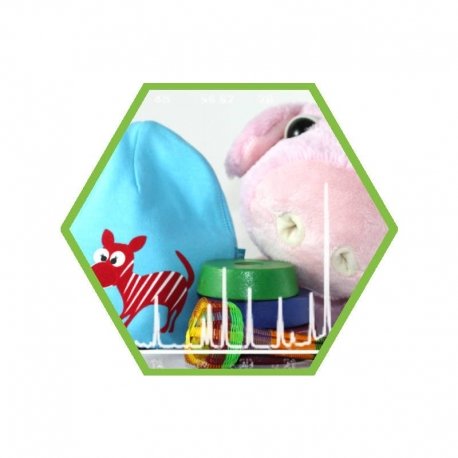Pollutant analyses for clothing, leather goods and textiles
The main image problem in the textile industry are certainly the manufacturing conditions. Child labor, hunger wages and lack of safety are often associated with the production of clothing.
Another problem is the pollutants, which are repeatedly found in the textiles. Here we will show you:
- Which pollutants occur in clothing and textiles
- How the pollutants get into the product
- With which analyses you can have your clothes examined
Pesticides
Foremost there are the pesticides, which are used on the cotton plantations but also in the sheep breeding and wool production.
Specifically, the insecticides and fungicides are used on sheep to protect against bloodsucking insects. SThey are often found in the wool. Products made of wool, such as woolen socks, sweaters or the furniture for baby carriages, are often highly stressed.
Halogenated organic compounds (AOX)
Second there are halogen-organic compounds (AOX), which remain as residues from the dyeing process in the clothing. Some compounds from this group can trigger allergies, others are even classified as carcinogenic. The German Newspaper “Ökotest” (issue 01/2017) had depreciated seven children’s jeans in its test because of these connections.
Dyes / heavy metals
The dyes can contain further hazardous substances. Zum einen das Anilin, welches in Farbbausteinen verwendet wird. On the one hand the aniline, which is part of the dye molecule. On the other hand, heavy metals are found in the pigments (which are used for dyeing) and find their way into the textiles.
Formaldehyde
Then there are also chemicals, which are added specifically to produce certain wanted properties. For example, formaldehyde provides wrinkle-free clothing – but unfortunately its also responsible for irritating the mucous membranes. In higher concentrations it can trigger allergies.For further information, please visit our Topicpage for Formaldehyde.
Plasticizer / PAH
In the imprinted motifs on sweaters or T-shirts, plasticizers or polycyclic aromatic hydrocarbons (PAHs) can be hidden.
Some plasticizers are classified as toxic to reproduction. In the group of PAH, many compounds are known to be carcinogenic.
Chromium VI
Chrom VI is found mainly in leather goods, but also in textiles. It can be foud in leather products if the tanning has not been performed properly. In textiles it is introduced by the color pigments.
In Conclusion:
It is a good thing that people are becoming more aware of the problems in the textile sector, and also consumer expectations are changing. Fair working conditions and harmless textiles are now an important criterion for many consumers. But as the test of so called “Bio Childjeans” in German newspaper “Ökotest” (issue 01/2017) shows, still not all challenges are mastered.
Textile analyzes at my-lab International:
 | textiles: pestizides (Organochlorpestizides, Organophosphorpestizides, acid)MPT01 |
 | Farbstoffe in TextilienMTEX1 |
 | textiles: organic halogensMCX03 |
 | material and wood: FormaldehydMCF05 |
 | material: PAH (EPA)MPAH2 |
 | materials (different): softeners (phthalates)TWM01 |
Pictures taken from
- my-lab International | modified by my-lab International



